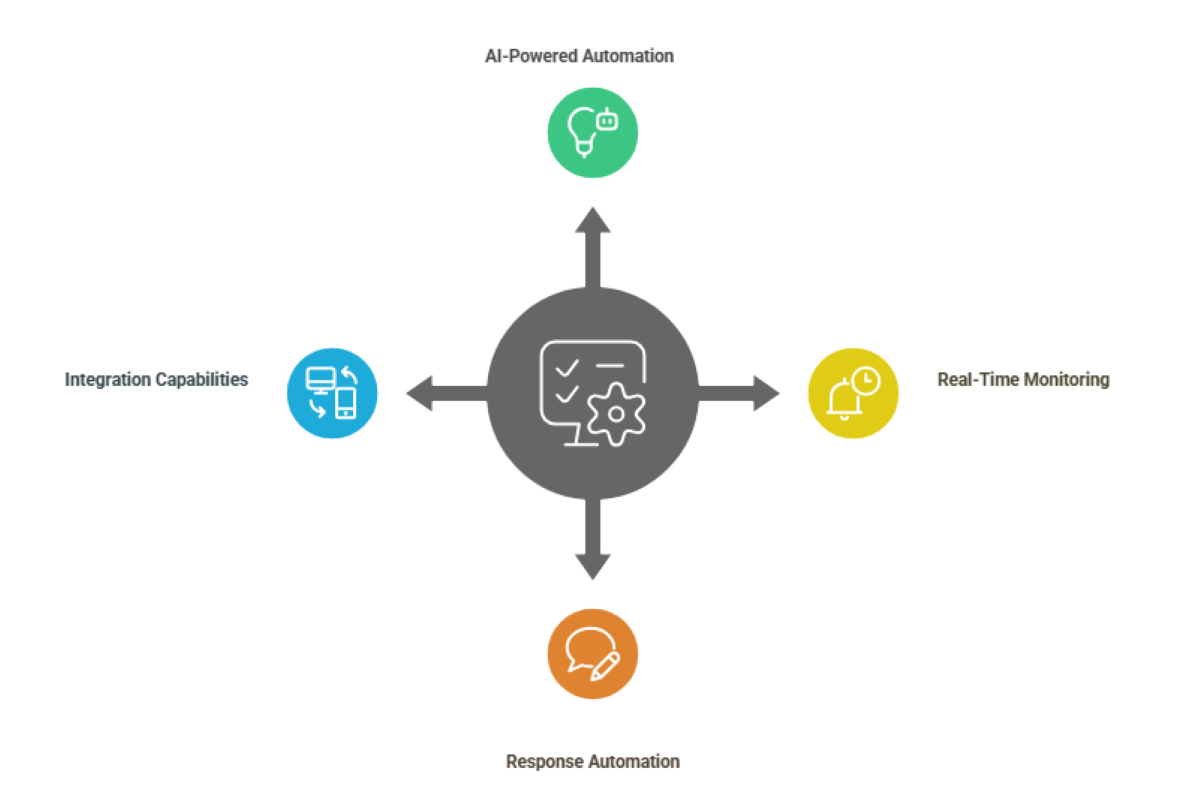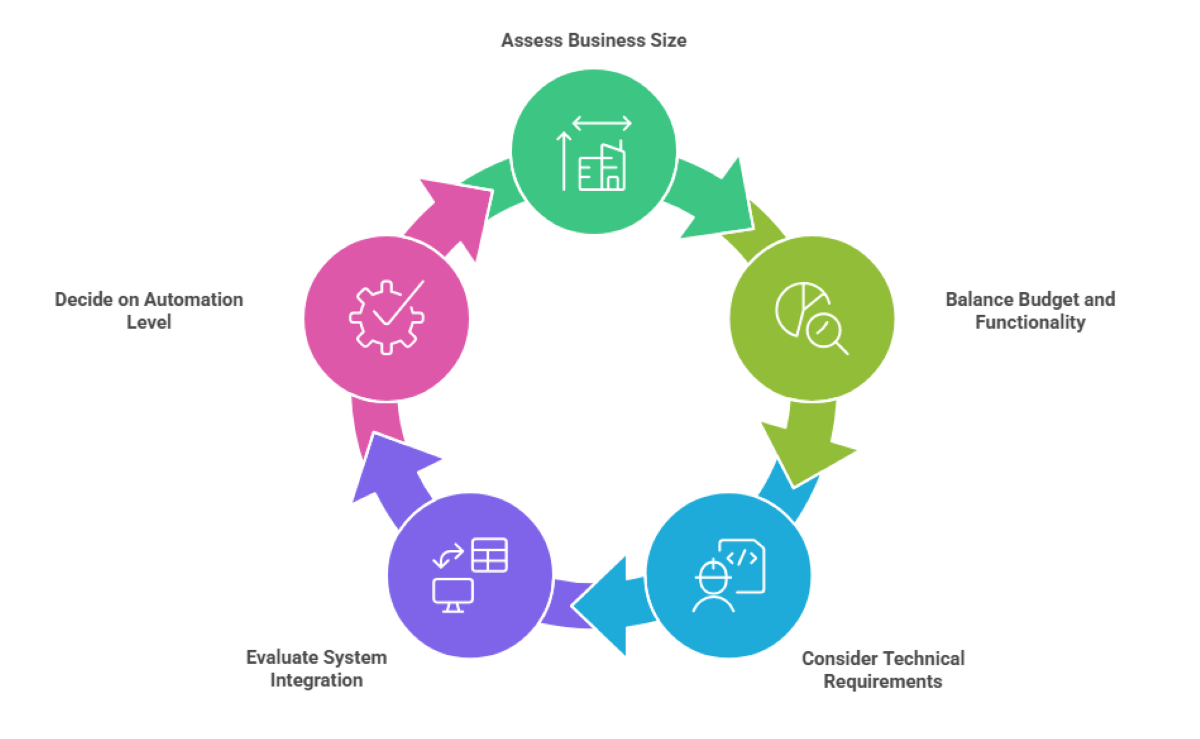
Small business owners spends hours perfecting their service, only to lose potential clients because of three unanswered negative reviews from last year. Meanwhile, their competitor with average service but stellar online reviews is booking customers left and right.
This frustrating scenario plays out daily for small business owners. When customers can’t see service quality before purchasing, they rely entirely on what others say online. A single negative review can undo weeks of marketing efforts, while just one additional star can boost revenue significantly.
The challenge isn’t getting good reviews; it’s managing them without drowning in the process. Manually tracking every review and crafting responses becomes overwhelming fast.
In this guide, we will examine seven proven Google review tools for small businesses that transform overwhelming reputation management into an automated competitive advantage.
Why Google reviews matter in 2025?
When someone asks for a restaurant recommendation today, most people don’t just suggest a place but pull out their phones and show the Google reviews to prove their point. This same behavior happens when potential customers discover your business online.
Your Google Business Profile reviews have become the digital equivalent of word-of-mouth recommendations, but with far greater reach and permanence.
Reviews directly impact your search visibility
When someone searches for businesses like yours, Google doesn’t randomly pick who shows up first. Your competitor who consistently asks for reviews will gradually climb above you in search results, even if your service is better. This means review collection directly affects whether customers find you or your competitors first.
The algorithm prioritizes businesses with stronger review profiles when determining local search visibility. Each additional review continues boosting your rankings, making consistent collection essential for maintaining competitive positioning in your market.
Your reviews sell for you 24/7
Most purchase decisions happen before customers ever call, visit, or even look at your website. Your reviews are doing the selling for you, whether you realize it or not.
This makes your online reputation one of your most powerful marketing assets. When customers can’t physically experience your service quality beforehand, they rely entirely on what previous customers share about their experiences. Strong reviews create confidence, while weak or missing reviews send customers searching for alternatives they can trust more easily.
Better reviews mean more revenue
Local businesses don’t compete on price alone, but on trust. Reviews provide the social proof that turns hesitant browsers into confident buyers. For a business earning $200,000 annually, that single star improvement could mean an extra $10,000 to $18,000 per year.
When you consider this return, spending time on review management becomes one of the highest-return investments you can make. Small, consistent efforts to improve your review profile compound over time, creating sustainable competitive advantages that are difficult for competitors to overcome.
AI now summarizes what customers think
Google now uses AI to create review summaries on business profiles, giving customers instant insights without reading individual reviews. This shift means managing your overall review sentiment matters more than crafting perfect individual responses.
If most of your reviews mention slow service, that’s what the AI summary will highlight, regardless of how well you respond to each complaint. The technology analyzes patterns across all your feedback, making consistency in service delivery more important than ever before.
Responses matter more than you think
Businesses that respond to reviews consistently outperform those that don’t. When you respond to reviews, both positive and negative, you’re not just talking to that one customer but showing every future customer that you care about their experience.
Companies that ignore this opportunity are essentially directing customers to competitors who understand the importance of active reputation management.
What to look for in review management tools?

The right platform should automate routine tasks while maintaining control over brand voice and customer relationships. Understanding core capabilities helps you choose effectively.
AI-powered automated management
Modern tools analyze review sentiment and suggest appropriate responses using artificial intelligence. This automation saves hours weekly while ensuring consistent, professional communication across all review platforms.
Real-time monitoring
Automated systems fetch new reviews immediately upon posting, sending instant notifications for quick responses. Fast replies demonstrate customer care and often prevent negative situations from escalating.
Response automation
AI-generated suggestions maintain brand voice while addressing specific customer concerns. The best systems learn from editing preferences, becoming more accurate over time at matching communication styles.
Integration capabilities
Platforms should connect with existing CRM and POS systems to trigger automatic review requests after customer interactions or purchases, eliminating manual data entry.
Top 7 Google review management tools for small businesses

After extensive research across review management platforms, testing user interfaces, and analyzing real-world performance data from hundreds of businesses, we’ve compiled this definitive list of seven tools that actually deliver results.
Each platform below has been evaluated for ease of use, automation capabilities, pricing transparency, and proven impact on business growth, giving you the detailed insights needed to make the right choice for your specific situation.
Trustpilot
Trustpilot operates as both a review platform and management tool, offering businesses access to its established ecosystem of over 300 million reviews. It also provides tools to collect Google reviews. The platform emphasizes transparency and consumer trust.
Best For:
- Businesses with online sales, e-commerce companies, and service providers who want to build a reputation across multiple trusted review platforms.
- Particularly effective for SaaS companies, online retailers, and businesses selling nationally or internationally.
Key Features:
- Multi-platform review collection (Google + Trustpilot)
- TrustBox widgets for website integration
- Advanced analytics and sentiment analysis
- Integration with e-commerce platforms
- Google Seller Ratings and rich snippets
- Automated fraud detection technology
Pricing: Four plans: Plus ($259/month), Premium ($629/month), Advanced ($1,059/month), and Enterprise (custom pricing). All pricing per domain, billed annually.
Pros: Established platform credibility, global recognition, strong e-commerce integrations, comprehensive analytics, and fraud protection.
Cons: High pricing for smaller businesses, divided focus between platforms, less specialized for local operations, and limited free features.
Direct GMB Integration: Partial (focuses primarily on Trustpilot ecosystem)
Spreadical
Spreadical offers AI-powered review management specifically through WhatsApp integration, making review management feel like natural business communication. The platform focuses on simplicity and automation while maintaining personal customer relationships.
Best For:
- Local businesses who prefer WhatsApp for customer communication and want streamlined review management without complex dashboards.
- Ideal for restaurants, retail stores, service businesses, and companies with personal customer relationships.
Key Features:
- AI-powered automated review responses via WhatsApp
- Real-time Google review monitoring with instant notifications
- AI-suggested replies that learn brand tone
- Review response automation with approval workflows
- Cloud storage for all reviews and responses
- Single dashboard for Google review management
Pricing: Custom pricing based on business size and specific needs. Contact directly for personalized quotes.
Pros: WhatsApp integration feels natural, AI learns communication style, simple setup process, automated workflows, and personal approach.
Cons: Limited to WhatsApp users, newer platform with fewer integrations, and less comprehensive than enterprise platforms.
Direct GMB Integration: Yes
Birdeye
Birdeye operates as an AI-powered platform for hyperlocal marketing, serving over 150,000 businesses with comprehensive reputation management. The platform combines review management, social media publishing, and customer communications in a unified dashboard designed for multi-location brands.
Best For:
- Service-based businesses and enterprises which operates on multiple locations and need thorough customer experience management.
- Particularly effective for healthcare practices, automotive dealerships, retail chains, and home services requiring professional-grade automation.
Key Features:
- AI-powered review generation and automated responses
- Unified inbox for text, social media, webchat, and email
- Business listing management across 150+ platforms
- Social media content creation with AI-generated posts
- Competitive benchmarking and sentiment analysis
- Integration with 3,000+ applications, including Salesforce and HubSpot
Pricing: Three-tiered plans: Starter ($299/month), Growth ($399/month), and Dominate ($499/month). Custom enterprise pricing available.
Pros: Comprehensive AI features, excellent multi-location support, strong automation capabilities, extensive integrations, proven track record.
Cons: Higher pricing point, complex interface with steep learning curve, potentially excessive for single-location operations.
Direct GMB Integration: Yes
Podium
Podium focuses on AI-powered lead generation and customer interaction management through text messaging. The platform converts website visitors, phone calls, and other touchpoints into text conversations, treating review management as part of comprehensive customer communication.
Best For:
- Local businesses are prioritizing personal customer relationships and text-based communication.
- Ideal for automotive dealerships, home services, healthcare practices, and retail, where immediate response drives conversions.
Key Features:
- AI employees responding to leads in under 1 minute
- Webchat converting visitors to text conversations
- Automated review requests and AI-generated responses
- Text-to-pay functionality and payment processing
- Video messaging capabilities via SMS
- Team collaboration with conversation assignment
Pricing: Three plans: Core ($399/month), Pro ($599/month), and Signature (custom pricing). Contact required for detailed pricing.
Pros: High conversion rates through SMS, natural communication flow, strong mobile capabilities, and effective lead generation.
Cons: Expensive pricing structure, accumulating text message costs, less focused on traditional review management, and requires long-term commitment.
Direct GMB Integration: Yes
NiceJob
NiceJob combines reputation marketing with referral generation, focusing on transforming customer experiences into marketing content. The platform helps businesses automatically collect reviews, create customer stories, and share social proof across multiple channels.
Best For:
- Service businesses want to combine review collection with referral marketing and website creation.
- Particularly effective for contractors, home services, personal services, and businesses where visual before/after content drives trust.
Key Features:
- Automated review invitations via email and SMS
- Customer story creation with photos and videos
- Social media integration and automated posting
- Website building and management services
- Referral campaign management
- Integration with 1,000+ business applications
Pricing: Two main plans: Grow ($75/month for up to 250 customers) and Pro ($125/month with additional features). Website building services are available separately.
Pros: Affordable pricing, easy implementation, combines reviews with marketing, excellent customer support, and a visual content focus.
Cons: Limited advanced analytics, fewer enterprise features, basic reporting capabilities, and primarily focused on smaller operations.
Direct GMB Integration: Yes
Yotpo
Yotpo provides an e-commerce retention marketing platform that combines reviews with email marketing, SMS, and loyalty programs. While primarily focused on product reviews, it also handles Google Business Profile reviews for businesses with physical locations.
Best For:
- E-commerce businesses and retail companies need both product reviews and local business reviews.
- Particularly effective for Shopify stores, online retailers with physical locations, and businesses wanting integrated marketing campaigns.
Key Features:
- Product and business review collection with photos/videos
- Email and SMS marketing integration
- Loyalty program management
- Visual user-generated content galleries
- Google Seller Ratings and Shopping ads
- Advanced segmentation and personalization
Pricing: Free plan available for basic features. Pro plan starts at $368/month, Premium at $941/month. Enterprise pricing is custom. Review-only plans start with Growth at $15/month.
Pros: Strong e-commerce focus, comprehensive marketing integration, visual content capabilities, scalable pricing options, and good Shopify integration.
Cons: Expensive for smaller businesses, primarily product-focused, complex pricing structure, and less specialized for local service businesses.
Direct GMB Integration: Partial (stronger focus on e-commerce reviews)
Reputation.com
Reputation.com provides enterprise-grade reputation management with AI-powered insights, comprehensive analytics, and multi-platform monitoring. The platform serves as a complete customer experience management solution for larger businesses and multi-location brands.
Best For:
- Established businesses with multiple locations, franchises, or complex reputation management needs.
- Particularly effective for healthcare systems, automotive dealer groups, restaurant chains, and service businesses requiring enterprise-level analytics and reporting.
Key Features:
- AI-powered sentiment analysis and response suggestions
- Comprehensive monitoring across 150+ review platforms
- Advanced business intelligence and competitive benchmarking
- Customer experience surveys and NPS tracking
- Automated listings management and social media publishing
- Enterprise-grade security and compliance features
Pricing: Custom enterprise pricing starting around $500-1,500+ per month, depending on locations, features, and business size. Starter packages begin at $200/month.
Pros: Enterprise-grade features and reliability, advanced AI capabilities, comprehensive analytics, strong security features, and excellent for complex multi-location needs.
Cons: High pricing is unsuitable for smaller businesses, the complex interface requires training, and it is potentially overkill for simple review management.
Direct GMB Integration: Yes
How to choose the right tool for your business?

Selecting the right review management platform depends on your business needs, budget, and team capabilities. You should consider these key factors when making your decision.
Business size and complexity
Small, single-location businesses need simple tools that offer easy setup and basic functionality. Multi-location businesses require platforms that provide user management, separate dashboards for each location, and combined reporting across all sites. You should think about your growth plans when choosing a platform that can scale with your business.
Budget and features
Basic tools typically cost $100-300 per month and provide monitoring and response capabilities. Advanced platforms with AI features and detailed analytics cost $300-500+ monthly but offer more comprehensive functionality. You should focus on features you’ll actually use rather than being impressed by extensive feature lists that may go unused.
Team technical skills
You need to pick tools that your team can actually learn and use effectively. Simple platforms require minimal training and allow quick adoption. Complex enterprise systems offer more advanced features but require significant learning time and ongoing technical support from your team.
Connection to current systems
You should choose tools that integrate well with your existing customer management systems, payment processing, or scheduling software. Good integrations prevent duplicate data entry and automatically trigger review requests after customer purchases or appointments.
Automation requirement
You need to decide whether you prefer full automation or want personal control over review responses. Full automation saves time and ensures consistent communication with all customers. Manual control allows you to maintain your personal touch and brand voice. Many successful businesses combine both approaches for optimal results.
Tips to maximize Google reviews using these tools
Effective review management extends beyond choosing the right software. These strategies help you achieve better results from any platform you select.
Automate with personalization
Set up automated systems to request reviews 24-48 hours after service completion, but customize messages based on specific services provided and customer relationships to increase response rates.
Respond to every review
Research indicates that 67% of customers who leave negative reviews will return if they receive speedy responses. Use your tool’s response features to acknowledge all feedback professionally, showing potential customers you care about their experiences.
Time requests strategically
Train staff to recognize positive customer experiences and use your review tool to send immediate requests when satisfaction is high. Timing matters more than frequency for generating authentic positive reviews.
Monitor trends using analytics
Use your platform’s analytics to identify recurring issues or praise patterns. This data helps improve service delivery while highlighting strengths in marketing and staff training.
Encourage visual content
Make it easy for customers to include photos in reviews through your chosen platform. Visual reviews stand out more and provide stronger social proof than text alone.
Frequently asked questions
What are Google review tools, and how do they work?
Google review tools are software platforms that automate the collection, monitoring, and response to customer reviews on Google Business Profiles. They work by connecting to Google’s API to fetch reviews in real-time, sending notifications when new feedback appears, and often providing AI-powered response suggestions to maintain consistent customer communication.
Why are Google reviews critical for small businesses in 2025?
Google reviews directly impact local search rankings, with studies showing a 20% influence on local visibility, while 81% of consumers check reviews before visiting a business. Poor reviews can cost you up to 70% of potential customers, making active review management essential for maintaining a competitive advantage and customer trust.
Which Google review tool is best for small businesses on a budget?
For budget-conscious small businesses, NiceJob offers good value starting around $99/month, while Spreadical provides WhatsApp-based automation at competitive rates. Consider your specific needs: NiceJob for comprehensive features, Spreadical for simple automation, or free trials to test functionality before committing.
Can I automate review requests using these tools?
Yes, all featured tools offer automated review request capabilities through email, SMS, or messaging platforms. The best practice is to set requests to send 24-48 hours after service completion when customer satisfaction is fresh, with personalized messaging based on the specific service provided.
Do Google review tools help with responding to negative reviews?
Modern review tools provide AI-powered response suggestions for negative reviews, helping you craft professional, empathetic replies quickly. Many platforms offer sentiment analysis to guide response tone and templates for common issues, ensuring consistent quality in your customer communication.
How do review tools improve local SEO rankings?
Review tools improve local SEO by increasing review quantity and frequency, encouraging customer engagement, and maintaining positive review sentiment. Google’s algorithm considers these factors when determining local search rankings, making consistent review collection and management crucial for visibility.
Are there free Google review management tools available in 2025?
While most comprehensive tools require paid subscriptions, some platforms like Yotpo offer limited free tiers, and Google Business Profile itself provides basic review monitoring. However, automation, AI responses, and advanced features typically require paid plans ranging from $99-500+ monthly.
Can these tools integrate with my CRM or POS system?
Most professional review tools offer integrations with popular CRM and POS systems through direct connections or platforms like Zapier. This integration enables automatic review requests after purchases or appointments, creating seamless workflows without manual data entry or process management.
How do I choose the right Google review tool for my business?
Consider your business size, budget, technical comfort level, and existing tools when choosing. Single-location businesses can use simpler platforms like Spreadical, while multi-location operations need comprehensive solutions like Birdeye. Match features to your actual needs rather than buying maximum functionality.
Do these tools offer sentiment analysis or AI-based review summaries?
Yes, advanced review platforms provide sentiment analysis, trend identification, and AI-powered insights into customer feedback patterns. These features help identify recurring issues, track improvement over time, and make data-driven decisions about service delivery and customer experience improvements.


